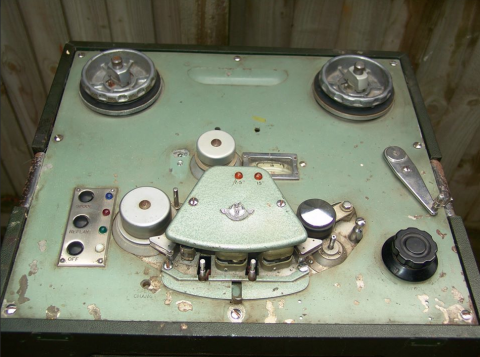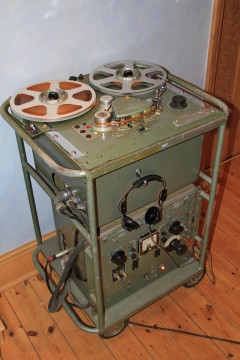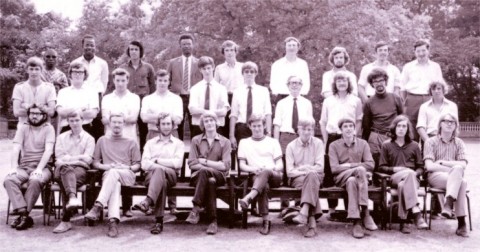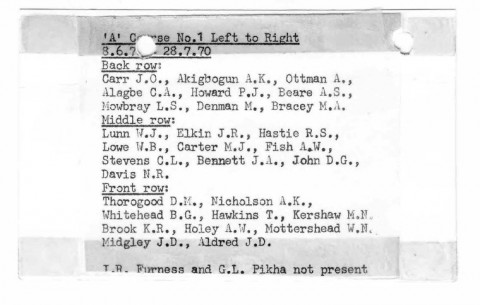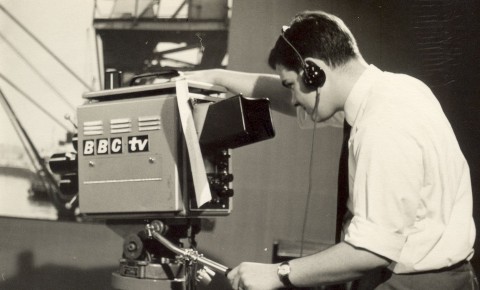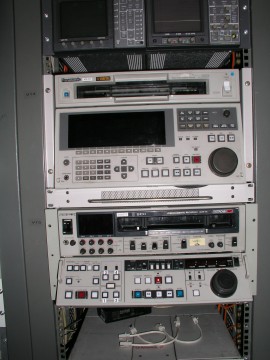 Photo by Ian Collins, no reproduction without permission.
Photo by Ian Collins, no reproduction without permission.
The photo shows a Panasonic D3 machine, and an Ampex Betcam SP machine.
D3 was a 1/2 inch videotape format which lost very little information between generations, and was hailed as a great revolution. It was brought in, in the early 1990s. I remember how excited everyone in post production got about D3, because you didn’t lose picture quality in going down a generation – although some thought that it would make production staff even more lax in their editing, because it didn’t matter if you had to go round again! Ironically, the tapes did not stand the test of time well, meaning that much of the BBC archive had to be digitised. D3 tended to be an editing and delivery format, rather than a shooting format.
Beta SP was also a 1/2 inch videotape format, and was the standard tape used in the late 1980s, and early 1990s for recording portable single camera location pieces.
These machines were in post production – probably in the machine room between VTC and VTE.
The following comments were left on the Pebble Mill Facebook Page:
Paul Vanezis: ‘We had three D3’s in VTE but 2 machines everywhere else. We did totally mad pre-read edits on Top Gear and The Clothes Show. But the maddest was a Motor Show Special. It was 10 minutes before TX on a Sunday afternoon in 1992. Steve Neilson was editing and dropped out of record in the middle of a pre-read edit. The look of horror on his face was something to behold. I got him to redo the edit as audio only and pick the vision up later! We did make it on air and there were plenty of examples of that going on.’
Alan Miller: ‘I believe the D3 saga has an interesting ending in that the BBC has thousands of tapes to archive but there are not enough D3 head assemblies in the world to copy them to another format!’
Adam Trotman: ‘And you had to line them up properly or you would get a hop in the picture. …’
Russell Parker: ‘They retired there, but I think this photo is either VTE or Edit 17’s machine room.’


